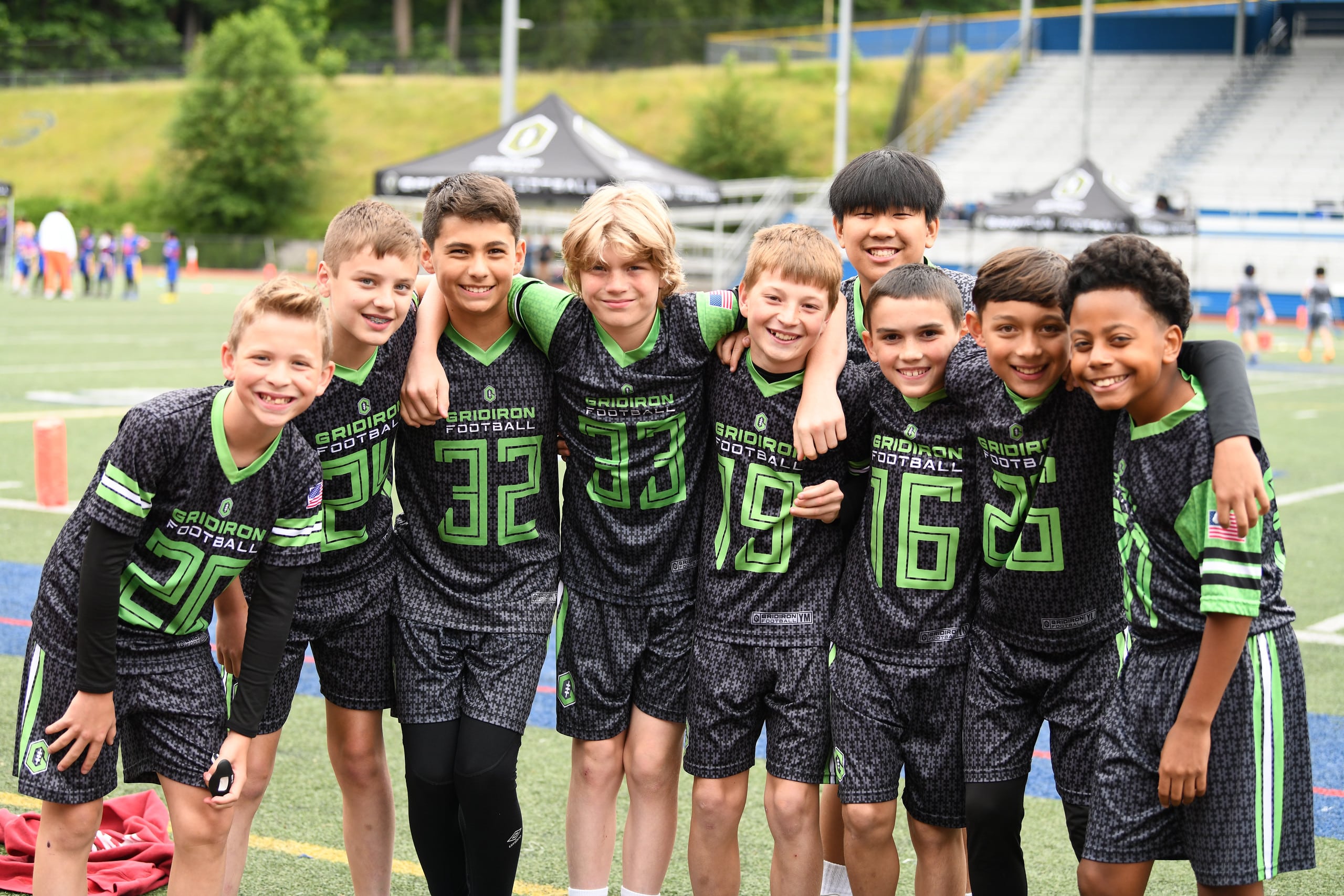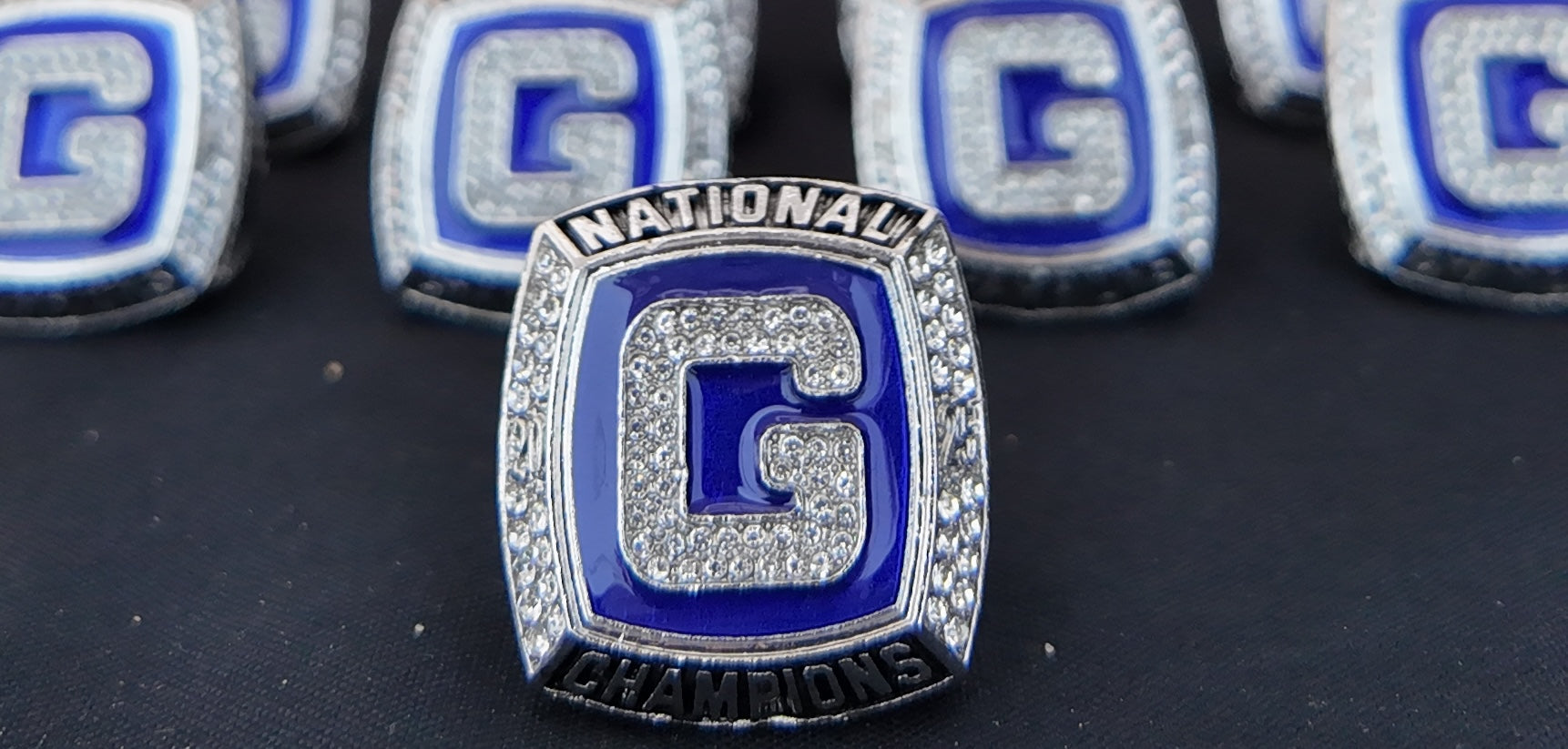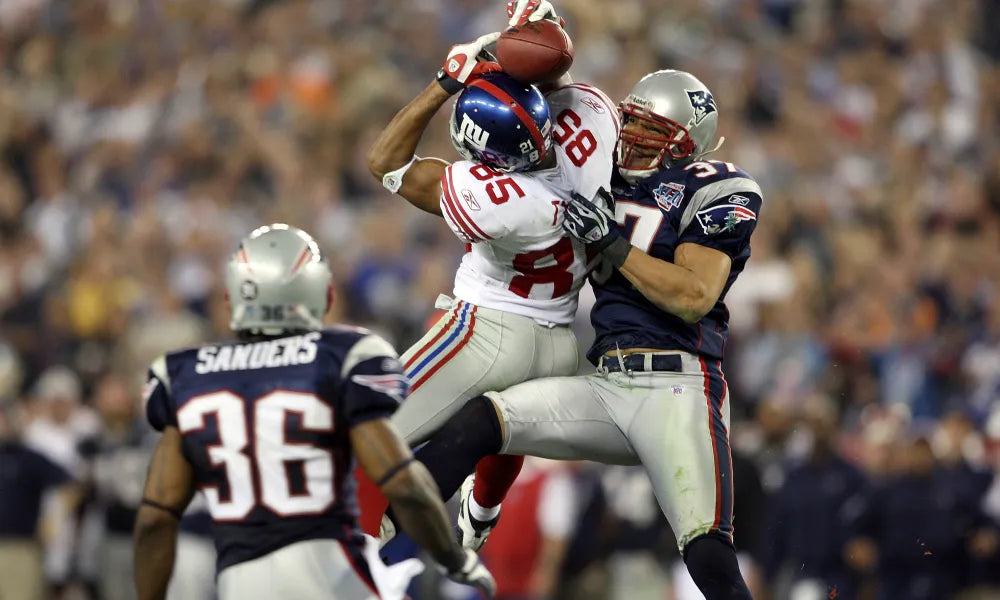In our continuing series on Flag Football for beginners, we’re sharing a few equipment recommendations and at-home drills to get you ready for game day!
Flag Football Equipment
Forget the expensive helmet, heavy shoulder pads and bulky gear of traditional football. Without the aspect of tackle and contact, you'll only need a few essentials for game day. Use our handy checklist below to get started!
Always check with your local league, as there may be slight equipment variations depending on the program you choose. For example, some 7v7 and Flex leagues may recommend or require soft shell helmets or light shoulder pads.
Flag Football Flags & Belt. The name of the sport kinda gives it away, but in flag football, players wear belts with flags that hang along their sides. Instead of tackling, opponents pull the flags off the ball carrier’s belt. Every player receives an official Gridiron belt and flags as part of registration.
Mouthguard. The rules of flag football require a mouthguard, and it’s the only protective gear that players must wear. We recommend having a backup pair in your bag, just in case. And don’t worry, there are some pretty fierce options available these days!
Football Cleats. Flag football is all about speed and agility. But that doesn’t work if you’re slipping on the field! Just make sure your cleats don’t have metal spikes.
Football Receiver Gloves. Looking for a little extra grip? Some players love a good pair of gloves to hold onto the ball just a little tighter. These aren’t required, though!
Shorts. Shorts without pockets are a must-have. This ensures the belt and flags are always visible, avoiding any unnecessary penalties. Plus, it helps prevent any injuries from fingers getting stuck while attempting to remove a flag.
Gridiron Team Jersey. Always a player favorite! Each of our players receives an official Gridiron jersey upon registration. Just make sure it stays tucked in on the field at all times.
Check out more player essentials in the Gridiron Pro Shop! And don't worry if you forget something on game day. Most of our leagues have equipment available for on-site purchase, too!
Flag Football Drills for At-Home Practice
Dynamic Warm Up
Shuffle– Line up your right (or left) foot on a starting line. At the whistle, shuffle to your right (or left), while pushing off your opposite foot.
High Knees– You’ll run while lifting your knees as high as you can. The goal is to lift them to your chest.
Back Pedal– You’ll back pedal all the way to the opposite end of the field.
Karaoke– Begin in a standing position and perform a grapevine pattern, while picking up speed in a sideways direction. Relax your arms at your side and as you run, place one foot in front of the other leg, step out to the side and bring the other leg behind you.

Conditioning
Line up with your heels on the starting line and back facing the field. On the whistle, back pedal all the way past the first line (be sure you can see the line in front of you before sprinting forward) and touch the line. Now sprint full speed to the starting point. As you sprint to the line, you need to come to balance in an athletic position and touch the line before they begin to back pedal. Repeat this with every line.

Agility & Speed
Set up six cones in a zig zag formation. Set the cones up every 5 yards. Start on one side. On the whistle, sprint to the first cone. When arriving at the cone(s) your foot speed should increase as quickly as possible, chopping as you come to balance. Once you hit the cone, cut off the foot that the side the cone is on. If you’re running to the cone placed on your right, you’ll cut off the right foot. On the cut, you should explode off and run to the other cone in the opposite direction. You’ll repeat this throughout the entire drill, hitting every cone. Be sure you finish through the last cone full speed. It is important to keep your feet under your body. If you begin to extend one of your feet, this could cause you to slip and fall. This drill is good for receivers making their cuts crisp, while teaching all players how to change direction quickly.

2-Step Handoff
Proper hand placement is key in a football handoff. Make sure your arms are close to your body, with your dominant arm across your stomach and the other arm across your chest. Cup your hands to shape an oval on your body. When you get the ball, hold it tight to your body
The ball carrier should be just a few short steps behind the QB. You can line up directly behind or at an angle. The idea is to reach the QB quickly, so make sure you’re not too far back. At the snap, the QB will move a two steps to a pre-designated side (cone). They’ll meet the ball carrier at this spot, crossing each other's paths. The QB will place the ball in the ball carrier's hands while the ball carrier takes the ball. Be sure to have the ball carrier firmly take and tuck the ball into their body. The ball carrier needs to be moving when the QB is turning back to hand off the ball.

Now you're ready for game day!




Share:
Setting the Stage for the Future of Flag Football
Halftime Snack Do's and Don'ts
1 comment
This post was super helpful! As a first-time parent, its great to know what is required for my Gridiron League here in DFW!
Keep up the great work for our kids Gridiron!